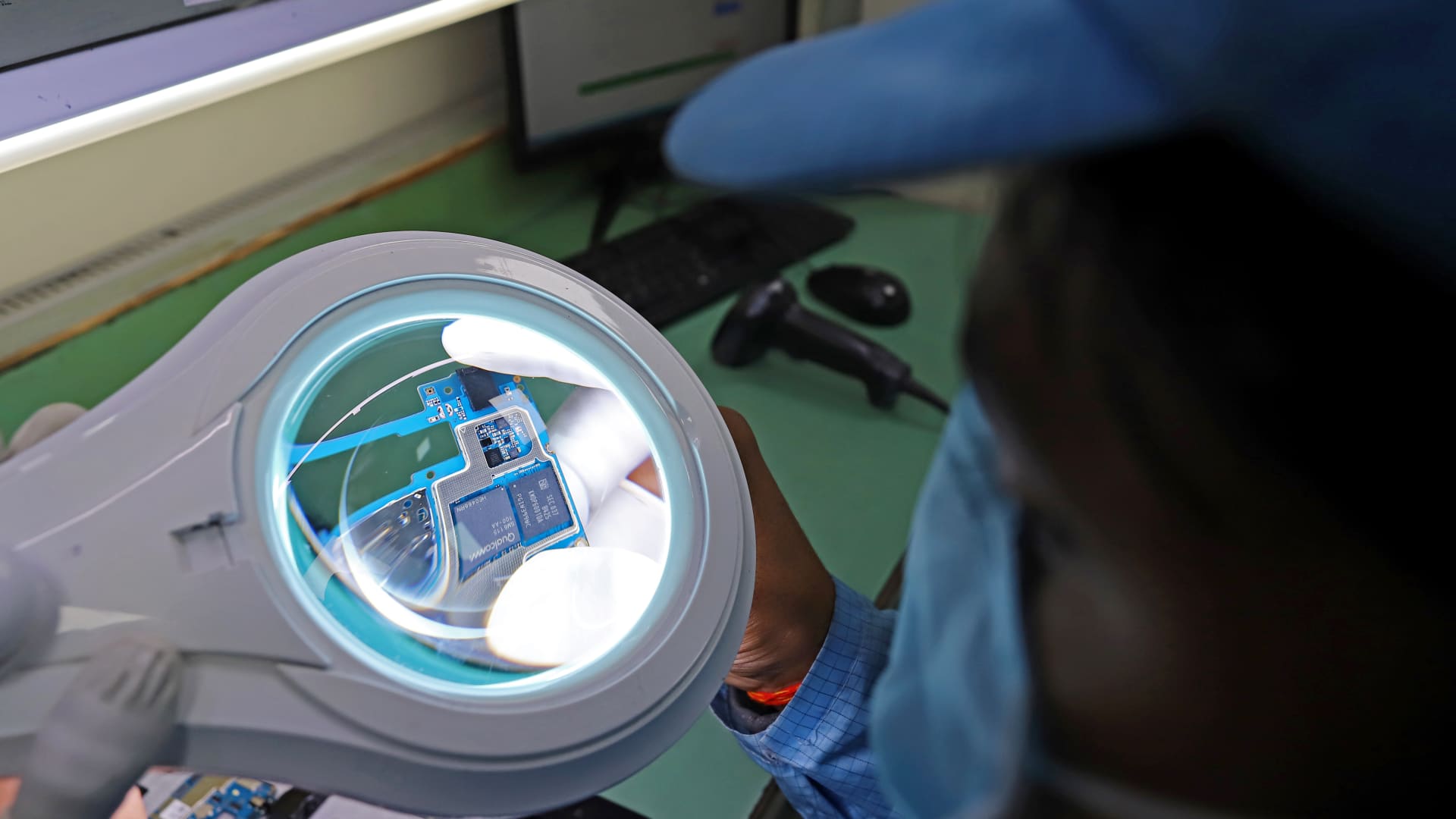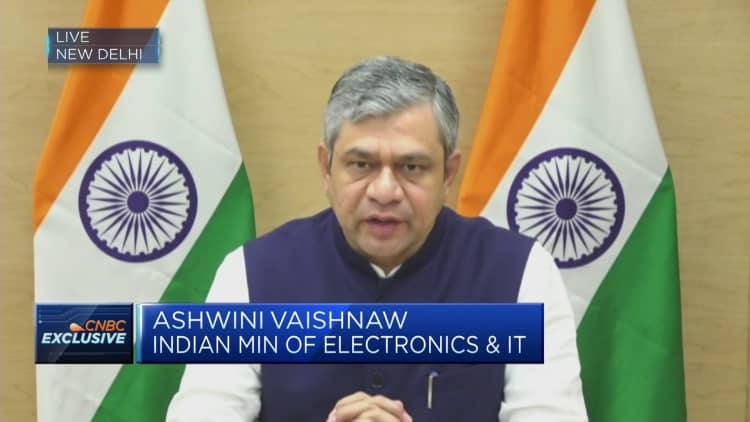

A worker inspects a circuit board for a smartphone at Dixon Technologies’ Padget Electronics Pvt factory in Noida, Uttar Pradesh, India, on Thursday, Jan. 28, 2021. Dixon boasts a market value of more than $2.5 billion and the capacity to produce about 50 million smartphones this year. Photographer: Anindito Mukherjee/Bloomberg via Getty Images
Bloomberg | Bloomberg | Getty Images
Qualcomm is already designing chips in India as it taps on the country’s pool of talented engineers, Qualcomm India’s president said in an exclusive interview.
“We already have chips that are actually designed completely end to end in India and we are shipping those globally,” Savi Soin, president of Qualcomm India, told CNBC.
The American chip giant designs semiconductors and wireless telecommunications products. Qualcomm is best known for its Snapdragon processors which power some of the top Android smartphones across the world.
Like any chip designer, Qualcomm doesn’t manufacture its own chips. Instead, it relies on chip manufacturers such as TSMC, Samsung Electronics and GlobalFoundries.
“We have more engineers in India now than we have anywhere else in the globe,” said Soin. “We have a lot of engineers here doing end-to-end chip design.”
The chip design process is “highly complex” as it requires “years of R&D, hundreds of millions of dollars of investment, and thousands of engineers,” said Semiconductor Industry Association in a report.
An integral part of the semiconductor manufacturing process, chip design defines the requirements for the chip’s architecture and system, as well as how individual circuits will be laid out on the chip.
Local media reported in January that Qualcomm is expanding its Chennai operations with a new design center focusing on wireless technology.
The 1.77 billion rupee ($21.3 million) investment will also support Qualcomm’s commitment to the Indian government’s vision of “Make in India” and “Design in India.”
“We saw India 20 years ago as a great R&D center of excellence and a great pool of talent. We’re seeing India as a great market, as [a] great opportunity,” Soin told CNBC’s Sri Jegarajah.
“We are now in discussion with a lot of semiconductor back-ends as well as manufacturing that India is trying to set up. Our CEO committed two years ago that if India sets up semiconductor manufacturing, we will actually help bring volume to that,” said Soin.
India’s chip push
India’s semiconductor ambitions have made huge strides with Prime Minister Narendra Modi’s government approving three semiconductor plants in Gujarat and Assam with investments of more than $15 billion.
“India already has deep capabilities in chip design. With these units, our country will develop capabilities in chip fabrication. Advanced packaging technologies will be indigenously developed in India,” according to a government statement on Feb. 29.
India wants to become a major chip hub to compete against the U.S., Taiwan and South Korea, and has been wooing foreign chip makers to set up operations in the country. Countries such as India stands to benefit as global chipmakers look to diversify operations amid geopolitical uncertainty.
To boost domestic manufacturing capabilities and exports, India has announced billions of dollars worth of production-linked incentives to “attract investment” in key areas and cutting-edge technology as well as to make India “an integral part of the global value chain.”
India aims to be one of the top five semiconductor manufacturers globally in the next five years, Ashwini Vaishnaw, minister of electronics and information technology, railways and communications, told CNBC in March.

“What we have seen is – for example, the PLI benefits – it certainly has brought manufacturing of more and more smartphones into India,” said Soin.
“So we have seen good incentives on IT, telecom and telecom equipment that’s manufacturing here. We are seeing some discussions around the design elements. So we’re hoping that more and more things, some elements of our products that use our technology, get designed in India,” said Soin.
Apple is one of the companies that has diversified some of its manufacturing operations to India amid U.S.-China geopolitical tensions. Apple now assembles about 14% of its iPhones in India, which is twice the amount it produced there last year, according to a Bloomberg report.
Google plans to begin production of its Pixel smartphones in India by second quarter, Nikkei Asia reported February.





